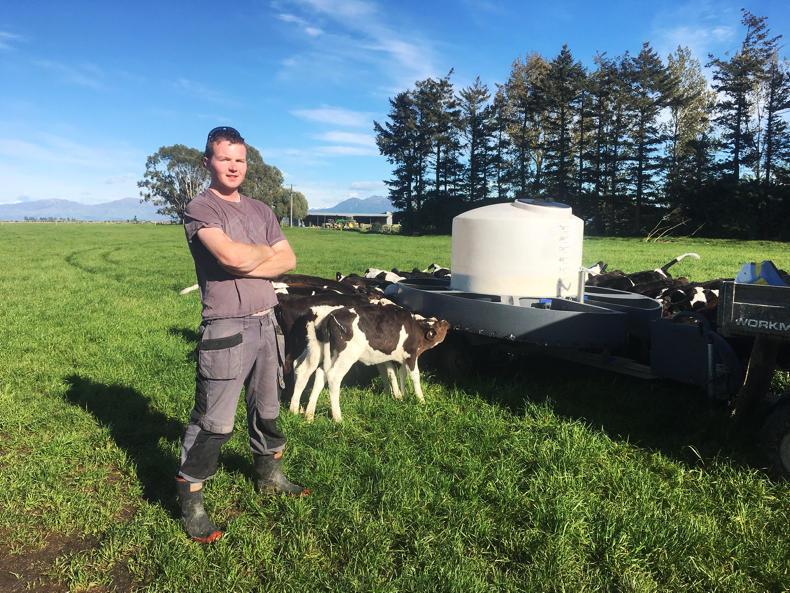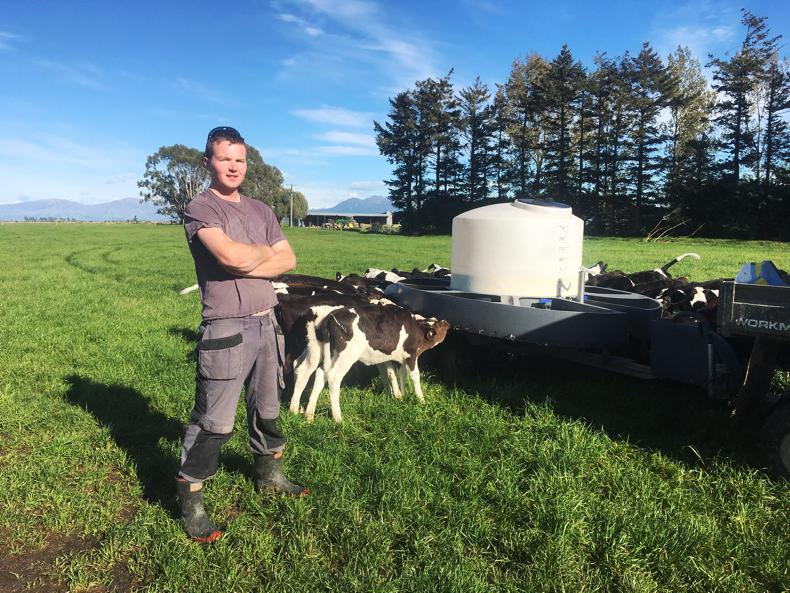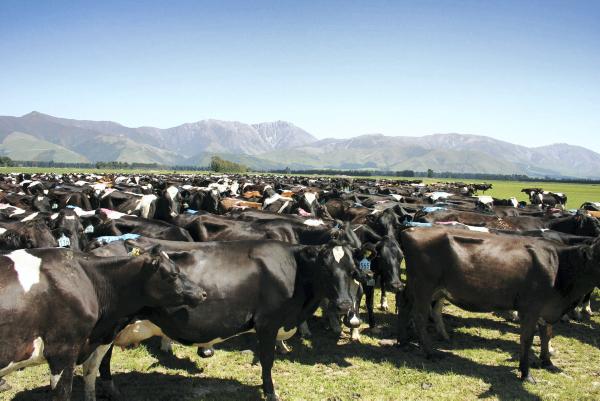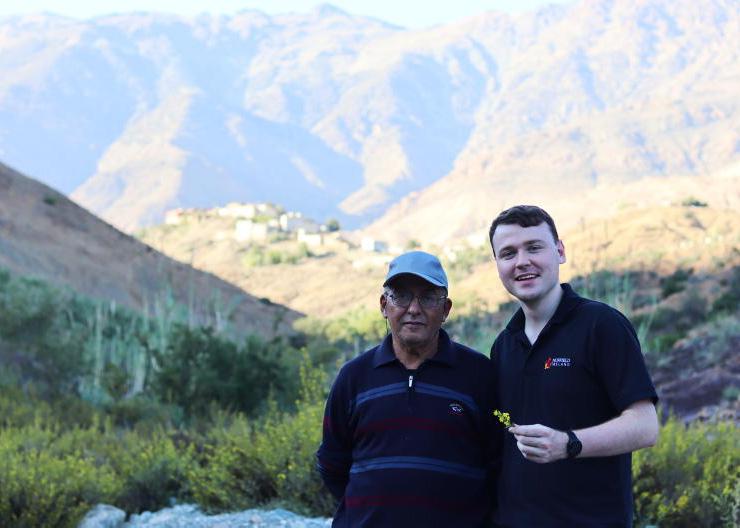With my time left in New Zealand quickly disappearing, it’s perhaps just as well I have my flights booked and my bags half packed. As if my situation here wasn’t precarious enough after the Irish rugby team’s superb win over the All Blacks in Chicago, fellow Tipperary man and former neighbour Tommy O’Donnell had to rub salt into the wounds and captain Munster to another historic win over the Maori All Blacks. On one hand I’m quietly delighted with these recent results, but on the other, I’m having to keep my head down as to not aggravate the situation further, with patience wearing thin with the many Irish workers over here as we continue to dish out lessons in rugby football to the current world champions.
Breeding season is well underway across New Zealand, with word on the ground being that submission rates are on target. Here on Fairfax Bridge Farm, after 19 days, 610 cows out of 722 have been served using AI. With a higher number of non-cyclers identified in pre-breeding this year, which management felt both BCS and unseasonal climatic conditions have had a major influence on, a decision was made to use intervention on 20% of the herd with a combination of PG and CIDRs used. While intervention was not considered initially, management felt it was a necessary tool to achieve the target 90% submission rate after 21 days, given the higher than usual number of non-cyclers. Last year, with no intervention, a 92% 21-day submission rate was achieved, but the number of non-cyclers at the start of breeding was at a much lower level than this season.
Although intervention is a useful option, the long-term aim of this farm is to have little or no dependence on it. Intervention is an added cost and also reduces the rate of genetic gain of the herd, as lower genetic merit cows remain in the herd and provide offspring for the future of the herd.
On Fairfax Bridge Farm, the AI technician comes each evening after the afternoon milking. In terms of picking up heats, tail paint is the aid of choice, which is topped up on a weekly basis. Each day, around 11am, we walk through each of the herds in their paddocks and record any cows that are standing, jumping or just hanging around obviously active cows. For each evening milking then, one of us stands up on the veterinary platform and we observe the cows as they go around on the rotary. Cows noted in the paddock have alerts put on them, which informs whoever is on the platform to check their tail paint and draft out if necessary. All other cows with rubbed tail paints are drafted, and any cows that we are unsure about are also drafted. After milking then, we will spend 10 minutes in the yard observing these question mark cows to see if they show signs of heat when mixed with the remainder of the drafted cows.
With 38mm of rain being recorded between last Thursday afternoon and Friday morning, there is no immediate need for irrigation, with soils at field capacity. Cows are back a bit in yield, which is to be expected as they are past their peak production at this stage of the season. Yields are still at a good level though, with cows milking 2.05kg/MS/day (24.5 litres at 3.81% protein, 4.61% fat, SCC 62). Grass growth is currently at 77kg/DM/day, with demand at 68kg/DM/day. ?
Read more
To read more from Michael Tobin click here.
Farmer writes: An earthquake in New Zealand
Kiwi influence on Co Cork parents son partnership
With my time left in New Zealand quickly disappearing, it’s perhaps just as well I have my flights booked and my bags half packed. As if my situation here wasn’t precarious enough after the Irish rugby team’s superb win over the All Blacks in Chicago, fellow Tipperary man and former neighbour Tommy O’Donnell had to rub salt into the wounds and captain Munster to another historic win over the Maori All Blacks. On one hand I’m quietly delighted with these recent results, but on the other, I’m having to keep my head down as to not aggravate the situation further, with patience wearing thin with the many Irish workers over here as we continue to dish out lessons in rugby football to the current world champions.
Breeding season is well underway across New Zealand, with word on the ground being that submission rates are on target. Here on Fairfax Bridge Farm, after 19 days, 610 cows out of 722 have been served using AI. With a higher number of non-cyclers identified in pre-breeding this year, which management felt both BCS and unseasonal climatic conditions have had a major influence on, a decision was made to use intervention on 20% of the herd with a combination of PG and CIDRs used. While intervention was not considered initially, management felt it was a necessary tool to achieve the target 90% submission rate after 21 days, given the higher than usual number of non-cyclers. Last year, with no intervention, a 92% 21-day submission rate was achieved, but the number of non-cyclers at the start of breeding was at a much lower level than this season.
Although intervention is a useful option, the long-term aim of this farm is to have little or no dependence on it. Intervention is an added cost and also reduces the rate of genetic gain of the herd, as lower genetic merit cows remain in the herd and provide offspring for the future of the herd.
On Fairfax Bridge Farm, the AI technician comes each evening after the afternoon milking. In terms of picking up heats, tail paint is the aid of choice, which is topped up on a weekly basis. Each day, around 11am, we walk through each of the herds in their paddocks and record any cows that are standing, jumping or just hanging around obviously active cows. For each evening milking then, one of us stands up on the veterinary platform and we observe the cows as they go around on the rotary. Cows noted in the paddock have alerts put on them, which informs whoever is on the platform to check their tail paint and draft out if necessary. All other cows with rubbed tail paints are drafted, and any cows that we are unsure about are also drafted. After milking then, we will spend 10 minutes in the yard observing these question mark cows to see if they show signs of heat when mixed with the remainder of the drafted cows.
With 38mm of rain being recorded between last Thursday afternoon and Friday morning, there is no immediate need for irrigation, with soils at field capacity. Cows are back a bit in yield, which is to be expected as they are past their peak production at this stage of the season. Yields are still at a good level though, with cows milking 2.05kg/MS/day (24.5 litres at 3.81% protein, 4.61% fat, SCC 62). Grass growth is currently at 77kg/DM/day, with demand at 68kg/DM/day. ?
Read more
To read more from Michael Tobin click here.
Farmer writes: An earthquake in New Zealand
Kiwi influence on Co Cork parents son partnership










SHARING OPTIONS